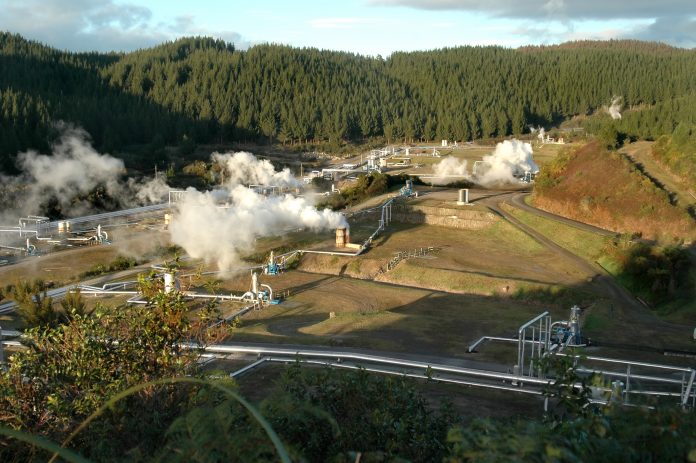Aarthi JanakiRaman and Shrinivas Tukdeo from TechVision, Frost & Sullivan, tell us what we need to know about geothermal energy and its role in the clean energy transition
As the world shifts towards the use of renewable energy, be it due to focusing on sustainability or geopolitical and economic factors, geothermal power is gaining focus among established renewable energy options, such as solar, wind and hydro. Geothermal energy, itself, is not a new concept, as it has been in use in specific geographical regions for heating purposes for decades. It is one of the viable ways to harness the heat from the earth for residential or commercial purposes, be it from near surface or deep reservoirs. Geothermal energy is generating interest as it can provide clean heating, emission-free electricity, and can even be deployed for the co-generation of electricity & heat for the clean energy transition.
Geothermal energy: Pros and cons
Like all renewable energy sources, geothermal energy also has its own pros and cons, which require careful evaluation to ensure that the energy source is optimally used for a clean energy transition. It is considered an infinitely available energy resource, as the primary energy source for geothermal power is heat generated from the Earth’s core. One of the key advantages of using geothermal energy is that it does not have issues related to fluctuations of availability, storage, and transport.
Another advantage is that it can be used in both small-and large-scale installations, making it a scalable solution depending on the location and availability of geothermal reserves. With operating costs as low as 1-2% of capital expenditure, geothermal has the potential to become a key energy source for a global transition toward a greener economy.
Geothermal also has its own perceived challenges; ongoing debate regarding its influence on geological changes such as ground surface stability and seismicity, etc., its location-specific nature, cost related to initial set up, etc. can hinder adoption. However, its flexibility for use in both residential and large-scale applications either through heat pumps or power plants, to leverage even the low-temperature reservoirs is a key factor that is driving the rising number of installations. As most of the plants inject the steam and water used back into the earth, it helps in replenishing the reserves while reducing emissions. The use of processes such as the binary cycle process and the Organic Rankine Cycle (ORC) can help in sustainable power generation from geothermal plants, making it an attractive value proposition as a renewable power source.
Technological advances in extraction processes such as EGS (enhanced geothermal systems) can help with access to reservoirs as deep as 3 – 5 km from Earth’s surface and the development of more efficient scrubbers to remove the hydrogen sulfide released from reservoirs can help in solving some of the other challenges. Further, recycling and reuse of sludge containing zinc, silica, etc. instead of disposal can also help with the cost economics of geothermal plants. Continued R&D efforts to make geothermal systems more efficient and accessible have resulted in increasing the number of installations across the globe with total power generation capacity reaching 14,100 MW in 2020.
Many countries are trying to mimic, what is known as the “Icelandic approach” for developing a roadmap for geothermal energy production. The use of multiple fields, from low to high-temperature fields for use in various applications from power generation to agriculture, adoption of both conventional and EGS with a favourable regulatory framework have successfully resulted in making Iceland a pioneer in the use of geothermal power.
The U.S. leads in the number of installed capacities, followed by countries such as Indonesia and the Philippines. Direct thermal energy utilisation from geothermal energy reservoirs is witnessing a significant rise and global thermal capacity reached 32 GW in 2020 with China, Japan, Turkey, and Iceland accounting for approximately 75% of the annual consumption.
Role in hydrogen economy
While the advantages of geothermal systems have been well established, the reviving interest in this renewable source is its potential contribution to the hydrogen economy. Geothermal energy provides two potential pathways for producing hydrogen. The first method involves utilising electricity generation from geothermal resources and utilising it for electrolysis of water for hydrogen production. Another approach is the direct extraction of hydrogen gas from geothermal vents located in volcanic regions and tectonic plate spreading zones such as terrestrial portions of the Mid-Atlantic ridge.
Another novel approach is recovering hydrogen from hydrogen sulfide gas, which forms a major portion of geothermal gas. As a result, continued innovation efforts toward the development of gas cleaning technologies and further understanding and management of cost can position geothermal energy as a major feedstock for hydrogen use for both mobile and other applications. Installations of small-scale modular units can result in the use of distributed hydrogen as a power source.
What next for clean energy sources?
Despite geothermal energy being a better renewable source theoretically when compared to other clean energy sources, it is still in the nascent stages of development except in certain countries. Even though it is perceived as an infinite resource, high production rates without replenishment can lead to depletion; necessitating, reinjection processes in all installations to maintain the reservoir pressure and restore it. Continuous monitoring and simulation technologies can help in predicting the production versus recharge rate to effectively use geothermal energy resources.
Geothermal plant developers also need to consider the sustainability of operations, effect on the environment and resource management plus optimized production rate to sustain the resource for a longer time. Cascading the use of geothermal energy from small-scale residential & commercial applications to agriculture, industrial and utility-scale applications can go a long way in effective utilisation of the resource. Legislation and a favourable regulatory framework are critical to boosting adoption. Clear standards and protocols that define expectations for all stages from exploration to replenishing are needed to mitigate potential environmental effects and to ensure the longevity of the resource. Similarly, tax credits and tax holidays, financial schemes and research support can help in increasing installations and aid in R&D to improve efficiency and cost economics of geothermal energy utilisation while mitigating the risks involved.











